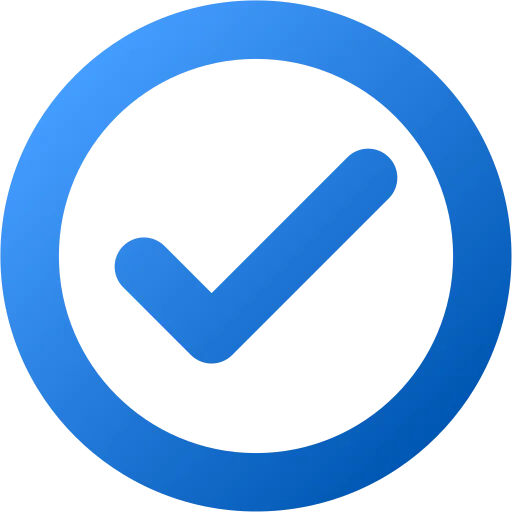
A person or organization must first pass through numerous phases of interest before becoming a paying customer or client. The terms leads, prospects, and opportunities are frequently used synchronously in B2B sales, despite the fact that they truly have distinct meanings.
Different forms and levels of interaction are necessary for each stage. That is to say, a lead cannot receive the same level of attention as an opportunity. Therefore, it is also true that knowing the distinctions between these three words will enable you to spend less time, effort, and money. However, it also makes it lot simpler for you to determine where a potential client is in the buying process and how to effectively move them along.
We will define each term and go through how they vary in terms of B2B sales in this blog article.
Must Read: Getting Back to Basics: The 5 Forgotten Fundamentals of Prospecting
Leads, prospects, and opportunities in B2B sales
Table of Contents
Before an organisation can become a paying client, there are a few engagement steps that are necessary in the B2B sales funnel.
We have leads at the top of the funnel. Meanwhile, you can turn them into prospects and eventually opportunities with a solid lead generating plan.
Every level of the funnel moves qualified leads (Marketing qualified or Sales qualified) into the following stage and eliminates leads that are not a good fit for what you have to offer. If you have 100 leads, for instance, perhaps only 50 of them will turn into prospects. Additionally, not all of those that do develop into prospects will result in viable business possibilities.
Only a small number of qualifying opportunities that are prepared to make a purchase from you should remain by the time you reach the bottom of the funnel. An organization’s interest in your product or service increases as you move them deeper down your B2B sales funnel. This also means that you have a better possibility of closing a deal.
Must Read: Lead Generation and Dating | Let Prospects Swipe You Right
What Differentiates Leads to Opportunities?
Now that we know where each term belongs in the sales funnel, let’s talk about what makes them unique and how to handle each stage effectively.
Leads: People that are just curious
A lead is a person who has expressed interest in your product or service inside an organisation. They could have subscribed to your newsletter or filled out a form on your website. But a sales representative hasn’t gotten in touch with them yet.
A lead would be someone who registers for your free trial, for instance, if you run a SaaS business. A lead would even be someone from a business who provided their email address to see a guarded, private explanatory video on your website.
In other words, a lead is a potential customer who may require your product, but you won’t know for sure until you start interacting with them more. The lead might be nothing as it’s not a guarantee, or it could be something that makes you want them to stay and continue chatting and connecting.
Why are they worthy of a fight?
Because they may be a reliable source of data on people who have visited your website or signed up for your newsletter, leads can be quite useful in B2B outreach. They aid in your comprehension of your target market and their interests.
This indicates that they are already familiar with your brand and what you do. They could feel more connected to you and more inclined to offer insightful comments as a consequence. For the sake of product development and marketing, this kind of feedback is crucial.
If fostered properly, leads can eventually become paying clients or customers.
How can leads be converted?
The objective at this point is to simply contact the lead and determine whether they are interested in knowing more about your offering. Email or phone calls are the ideal methods for accomplishing this.
It’s crucial to respect people’s time when reaching out and refrain from making an immediate sales pitch. Recall that they aren’t yet prepared to make a purchase.
The ideal strategy here is to just identify yourself and your business, describe what you do and how it will help them, and then gauge interest.
Prospects: They desire to be friends
Your chances of discovering a qualified prospect increase as you create more high-quality leads. A lead who has been approached by a sales representative is a prospect.
The salesperson made an attempt to strike up a conversation. This implies that a lead becomes a prospect once you get in touch with them and get a response.
Must Read: Improve Sales by Focusing on the Customer Experience
Why are they worthy of a fight?
Prospects are valuable since they have previously expressed interest in your business’s goods or services.
They are more than only a name on a list. You’ve already begun to establish a rapport with them. You are aware of their interests and have a rough sense of any potential needs.
Because they are further along in the buying process than leads, prospects are significantly more valuable than leads.
How do you get prospects to buy?
At this point, the objective is to deepen the connection and engage them on a more intimate level. Having a dialogue with potential customers and making an effort to comprehend their requirements is essential to engaging them and converting them.
This calls for you to learn more about their problems and the remedies they want before determining whether your offering may be of use.
Here is where you’ll start to get specific in order to determine if there is a fit. In the evaluation stage, it’s crucial to have open channels of communication and to keep the connection growing.
The most effective method to achieve this is through a meeting, whether it be in person, over the phone, or by video conferencing. Any material that speaks to them more directly, starting from their perspective, such as product demo films, use case studies, or testimonials, is also a successful strategy.
Opportunities: Moving closer
A prospect who has been determined to be a suitable fit for your product or service is an opportunity. They may be comparing several sellers or negotiating conditions as they seriously contemplate making a purchase.
In other words, they recognise a need for your good or service and have faith in your ability to meet it.
Why are they worthy of a fight?
They are prepared to buy, which is the obvious response. Compared to leads or prospects, they are far more likely to convert into paying customers.
You already know there is a need at this point; all that is left is to complete the transaction.
How can you get people to buy from you?
The ideal strategy here is to provide them a proposal outlining the conditions of your good or service. Include any additional pertinent information here, such as price and delivery schedules.
The objective is to provide them with sufficient knowledge to enable them to make wise decisions. It’s crucial to check up with them after you’ve delivered the proposal to see if they have any questions or issues.
Starting to consider bargaining at this point is also a smart idea. Here, you’ll attempt to come to an understanding regarding the cost, the timing of delivery, and any other crucial data.
Create more opportunities for sales
You may develop a focused outreach plan that will enable you to close more transactions if you are aware of the distinctions between leads, prospects, and opportunities. Continue producing leads, get in touch with them, strike up a discussion, identify them as prospects, and then convert them into opportunities.
But in the end, they are all prospective clients seeking remedies for issues that their companies or organization are facing. It’s always important to prioritize coming across as friendly and human first.
Also keep in mind that whether or not you can move them through your sales funnel depends on the relationship you have with them.
What are your thoughts about this? Do you have any different dynamics of B2B lead generation and sales outreach? Please feel free to express your thoughts in the comments section.
Must Read: 5 Steps for a Successful Business to Business Sales

Vikas Bhatt is the Co-Founder of ONLY B2B, a premium B2B lead generation company that specializes in helping businesses achieve their growth objectives through targeted marketing & sales campaigns. With 10+ years of experience in the industry, Vikas has a deep understanding of the challenges faced by businesses today and has developed a unique approach to lead generation that has helped clients across a range of industries around the globe. As a thought leader in the B2B marketing community, ONLY B2B specializes in demand generation, content syndication, database services and more.


